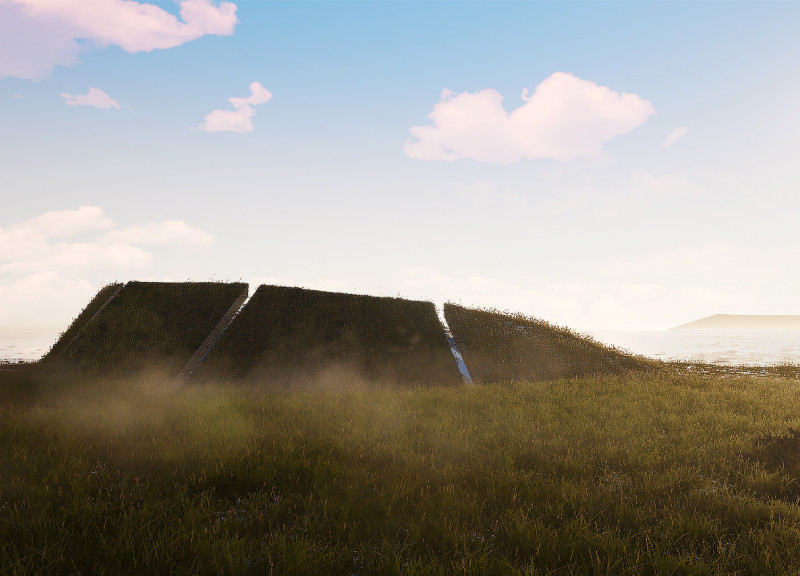5 key facts about this project
The Volcano Museum stands as a notable exploration of geological themes, positioned within a landscape that speaks to its purpose. It serves to educate visitors about the Earth’s thermal energy dynamics and volcanic activity. The design draws inspiration from the form of a dormant volcano, integrating with the surrounding environment while fulfilling practical functions.
Architectural Form
The design borrows from an overgrown dormant volcano, echoing local turf house shapes. This architectural choice helps the building blend into its surroundings while providing shelter from the often harsh climate. Inside, the museum features a volcanic sanctuary, which remains comfortable throughout the year thanks to a geothermal heating system.
Light and Spatial Organization
Natural light plays a key role in the building's design. The concave shape of the structure captures daylight, creating a warm and welcoming atmosphere. An open plan layout maximizes this light, which is particularly valuable during the long winter months when sunlight is limited. The arrangement allows for flexible use, accommodating various exhibits and community events.
Exterior Dynamics
The museum's exterior is characterized by fragmented forms that evoke the appearance of an active volcano, especially at night when it stands out against the landscape. This design creates a striking contrast with the natural world while remaining conceptually connected to the geological themes the museum presents.
Structural Integrity
A compression ring roof connects the leaning turf panels, creating a vaulted structure. This design ensures stability while allowing for an inner glass enclosure that invites views of the landscape. The use of carbon sequestering cross-laminated timber panels supports the building's framework and aligns with sustainable architectural practices.
A dual pathway guides visitors from the parking area, including a ramp for accessibility. Integrating geothermal systems with natural materials highlights the museum's low environmental impact. As night falls, the fragmented exterior becomes a focal point, illuminating the building and inviting exploration and learning about the Earth’s natural processes.






















































